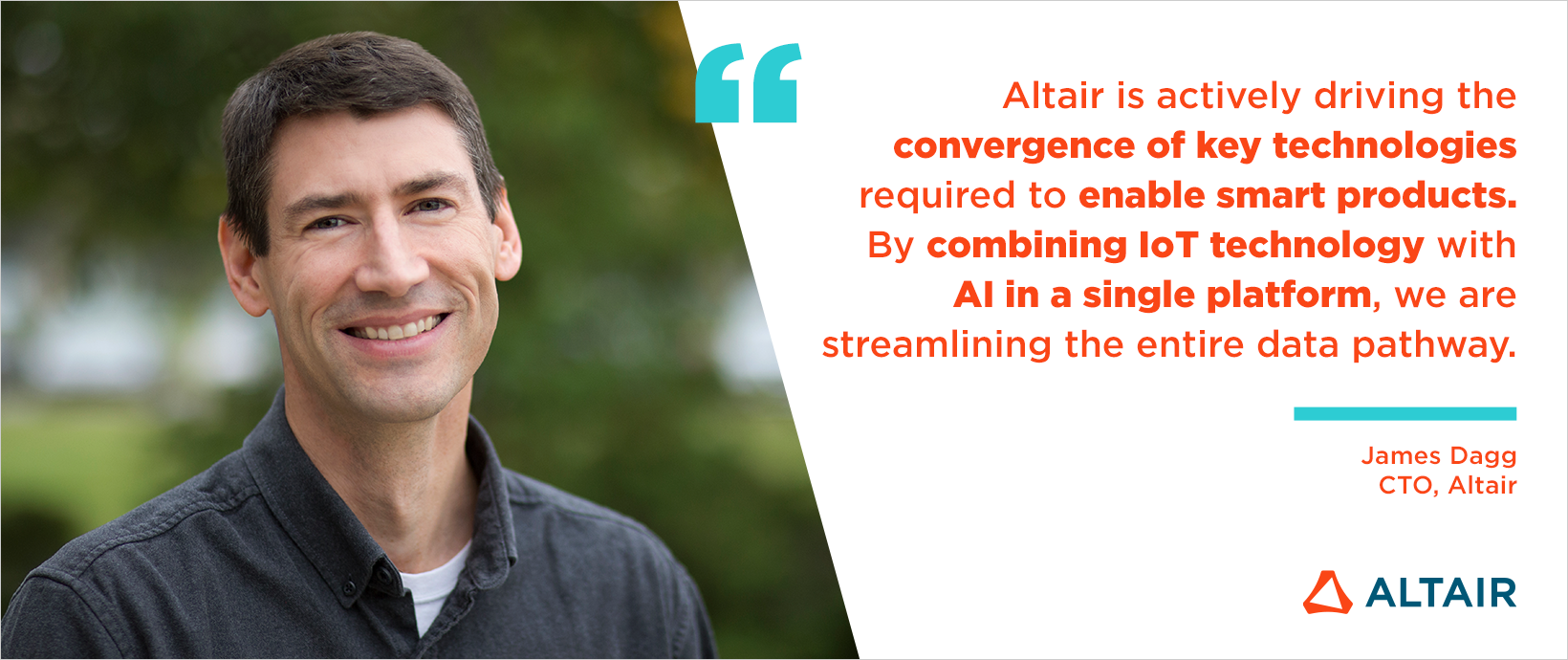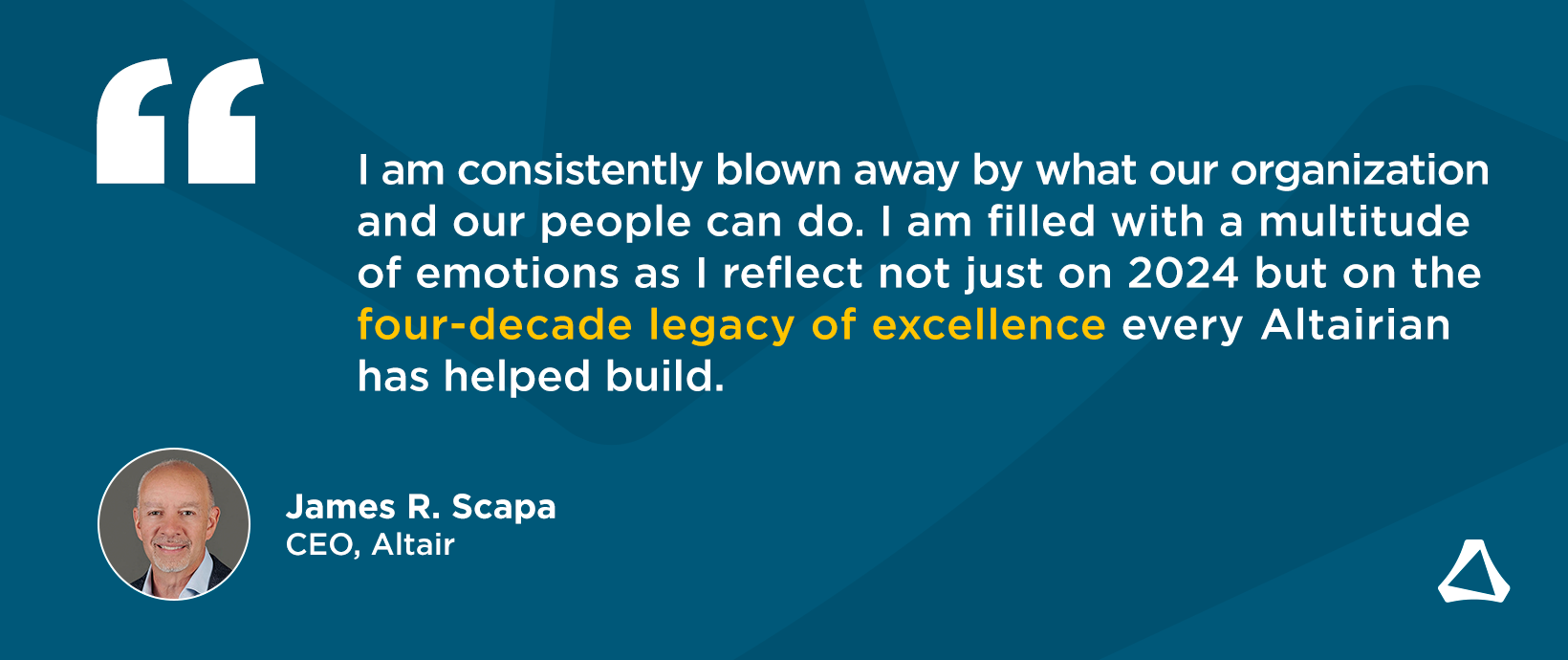Designing for an Endlessly Connected World

Considering it was granted in 1886, Carl Benz’s patent for a “vehicle powered by gasoline engine” has stood the test of time pretty well. For the next hundred plus years, automotive development was all about relentless refinement. Broad principles such as propulsion and control remained remarkably faithful to Benz’s original blueprint.
However, in what seems like no time at all, many of the basic rules have been rewritten. Cars are being electrified and automated. What was once simply a means of getting from A to B is morphing into a smart mobility solution, seamlessly integrated into a world of 24/7 connectivity.
At Altair, we believe that successfully redefining the automobile demands similarly profound changes to the design processes behind it. Fundamental is the use of technologies such as artificial intelligence (AI), machine learning (ML), and neural networks, along with our capabilities in data analytics, high-performance computing (HPC) and, of course, multi-physics simulation.
Each of these elements can bring considerable value to the automotive environment. But the real story is how Altair brings them together. Design siloes have never been a good basis for vehicle development. In an era where the boundaries between the various system elements are blurring or disappearing completely, their limitations are becoming even more apparent.
Simply put, we are now dealing with designs in which everything is connected. Our solutions must reflect this, ensuring each level of the product – from a printed circuit board (PCB) to a ‘system-of-systems’ – is part of the same integrated pathway.
At each of these levels, we aim to provide the designer with everything they need to reach the right decision. But we need to do this without unnecessary granularity that will inflate the model size, slow the process down and bury insight under detail.
So, at the concept stage, AI can often predict the performance of design faster than traditional physics simulation. That doesn’t mean physics simulation has suddenly become redundant. Increasingly, it will be used to train neural nets and to verify the results predicted by AI.
We’re also looking at new methods to use AI to perform the role of hardware or physics simulators known as ‘plants’ in control systems. Because neural nets, once trained, can respond to inputs very quickly, they can be used as a form of high-fidelity, ‘reduced order model.’ These cut the time and cost of developing control systems for complex products. Technologies such as AI and ML can also convert our solvers’ detailed 3D analysis into higher level insight, informing the next step up in the design food chain.
With data increasingly driving the design process, efficiently harnessing a wealth of information has become another priority. Autonomous driving control systems need to be trained using billions of simulated miles, recreating every imaginable set of conditions and scenarios. Our data analytics tools ensure the relevant insights are derived quickly. Moreover, our load management technologies provide efficient distribution of heavy compute workloads across the HPC environment.
Altair is actively driving the convergence of key technologies required to enable smart products. By combining Internet of Things (IoT) technology with data analytics and AI in a single platform, we are streamlining the entire data pathway from sensors and other edge devices to autonomous control systems, digital twins, and operational decision-making.
While the self-driving car may be the most high-profile example, the autonomous revolution already extends much further. In fact, in applications including drones, agricultural equipment, factories and homes, commercialization is often much further along. What’s more, technologies such as data analytics and AI are not only enabling the creation of this new smart generation, as we blur the lines between design, manufacturing, and operations, and between the digital and physical worlds. They are fast becoming part of the products themselves. The implications could turn out to be every bit as enduring as Benz’s vision of the future, way back at the end of the 19th century.




